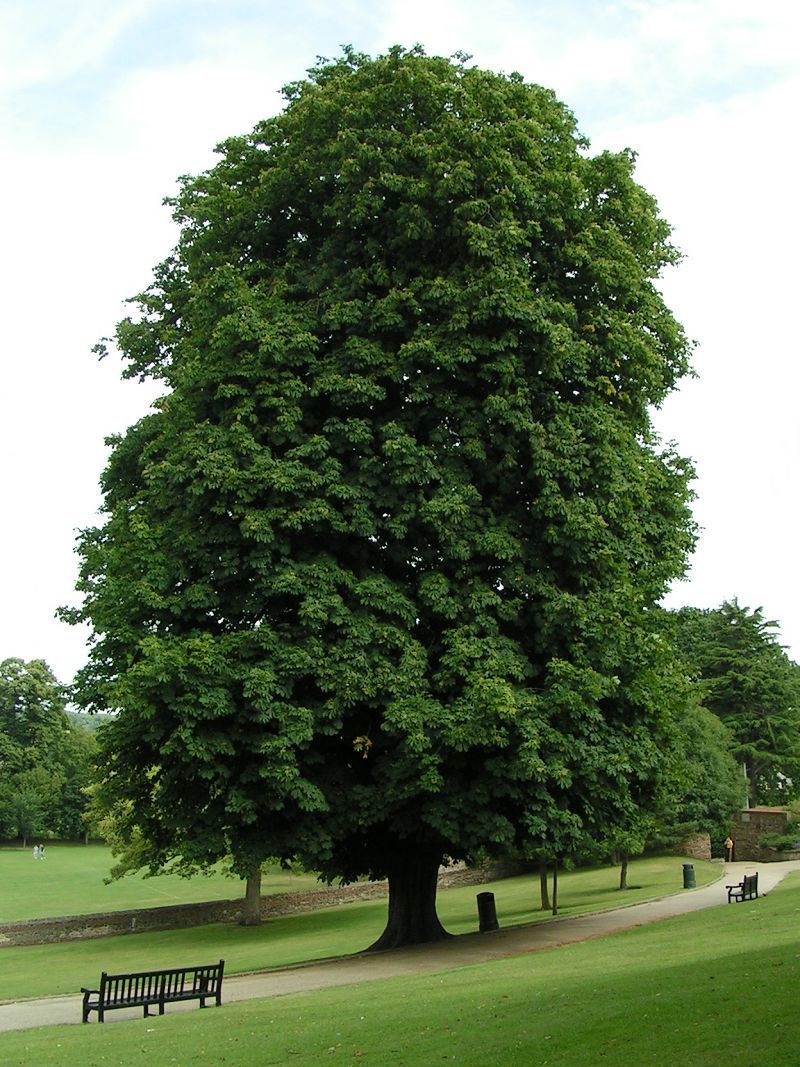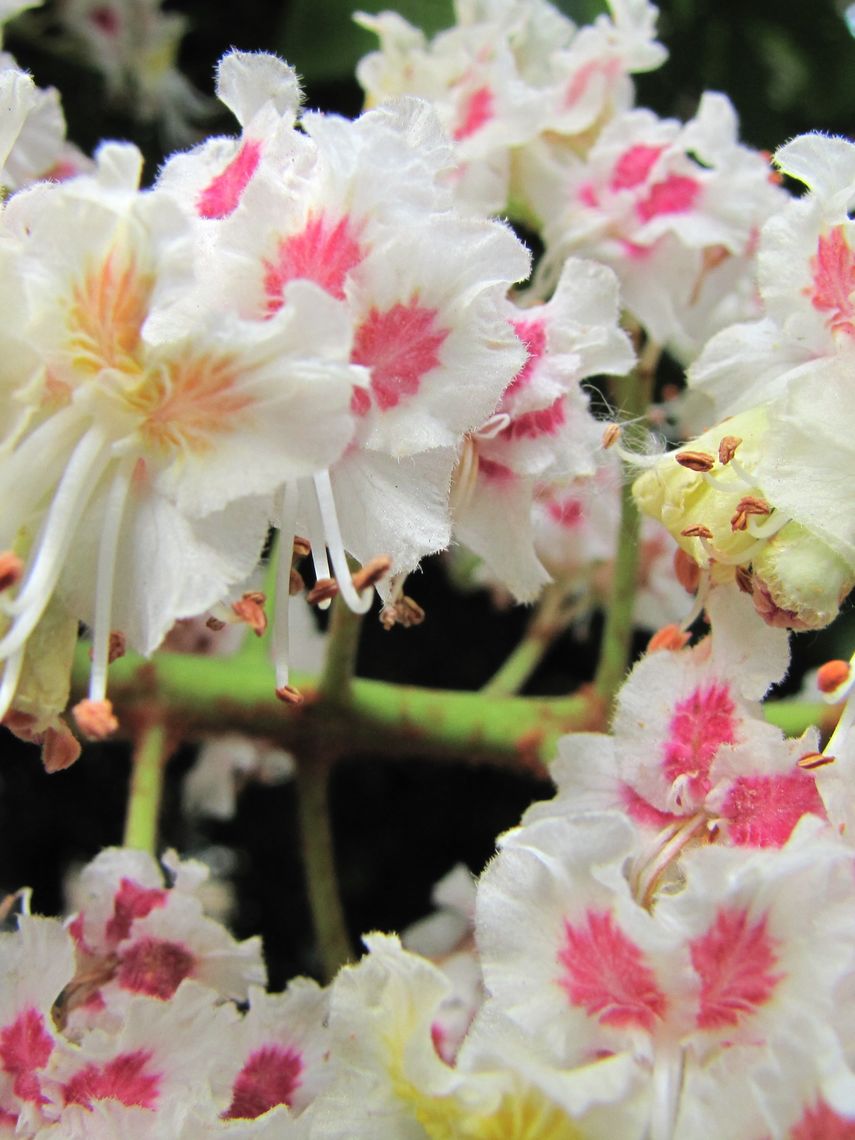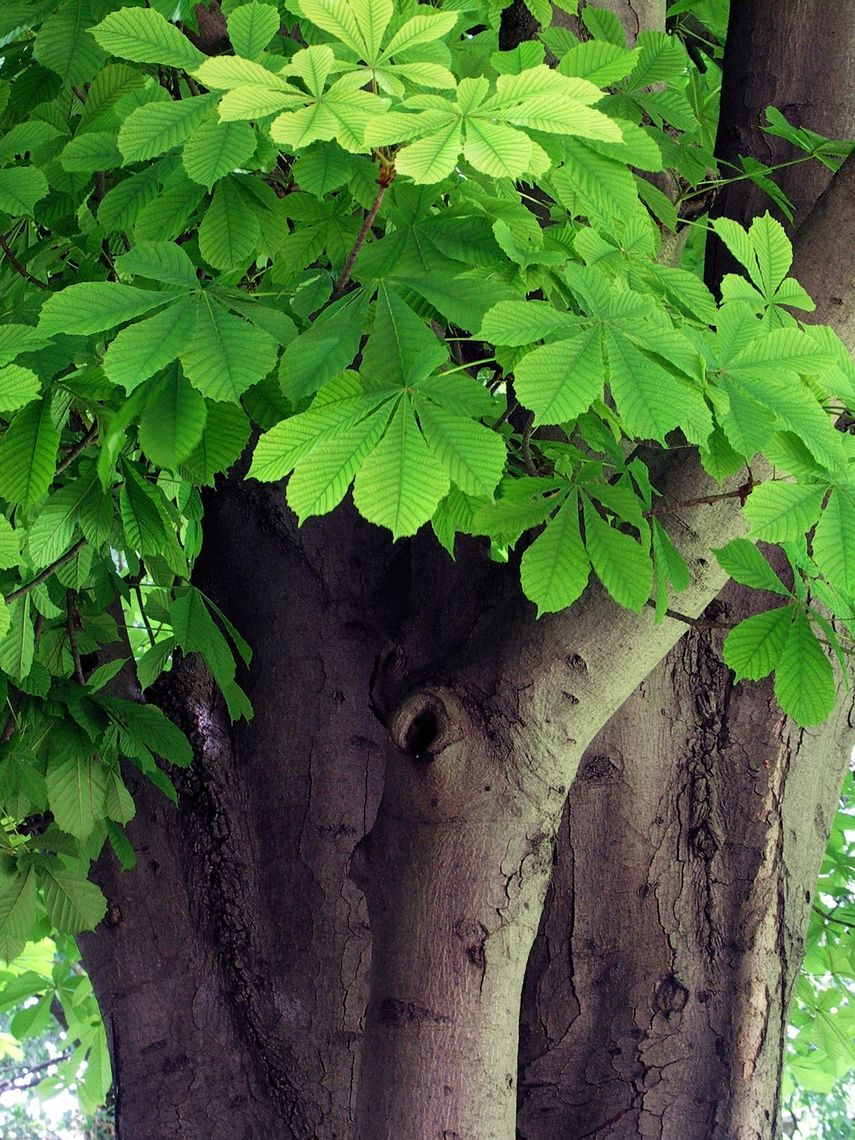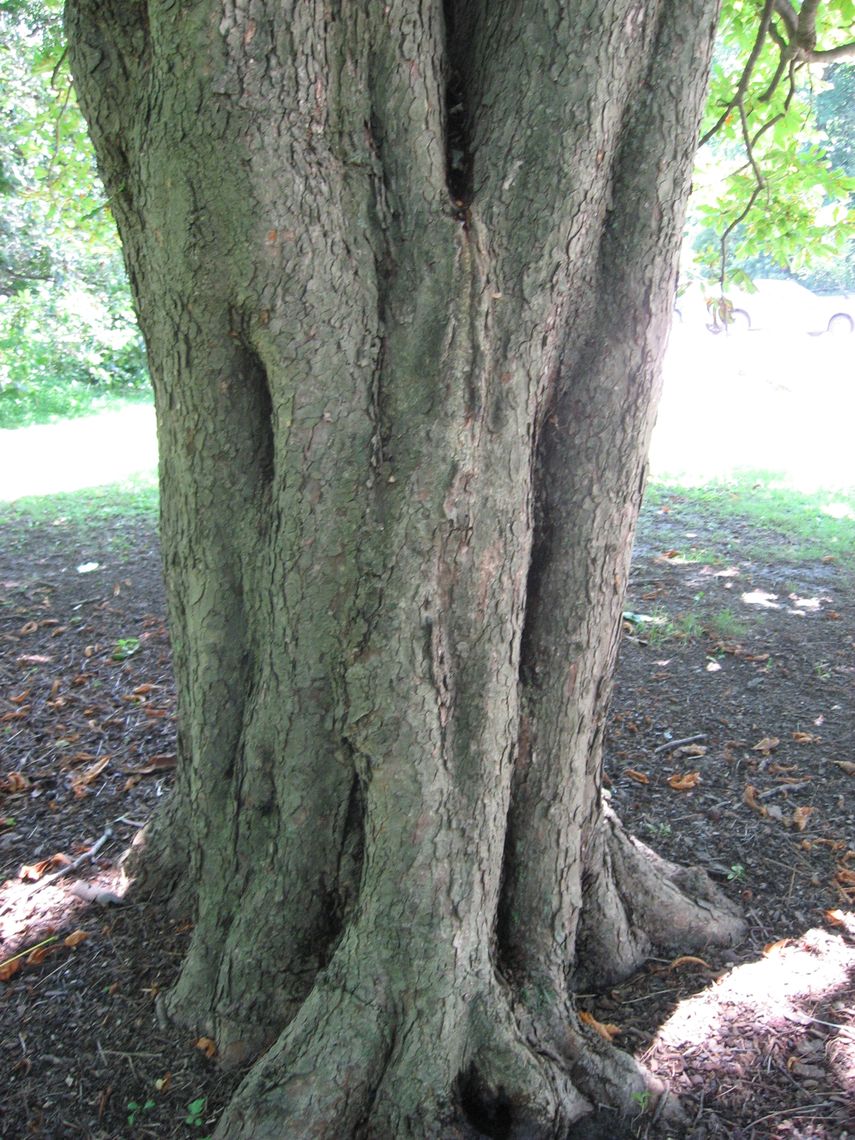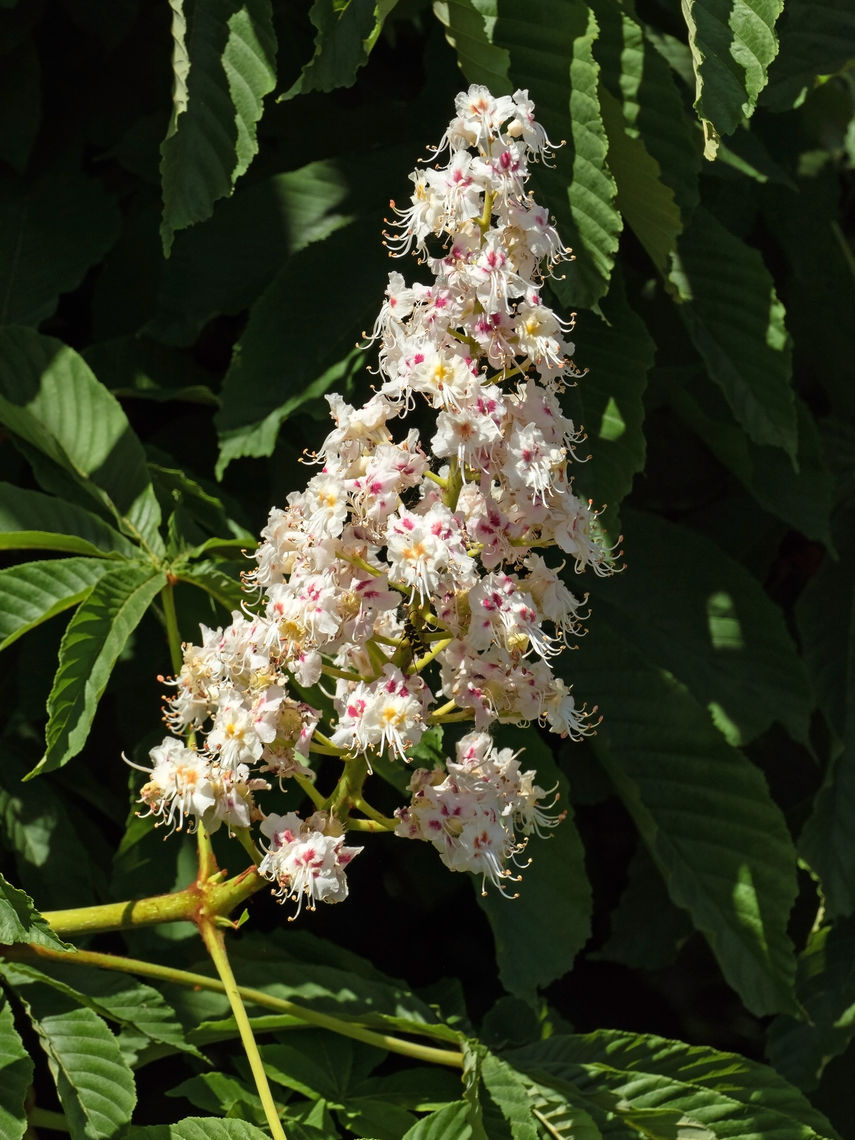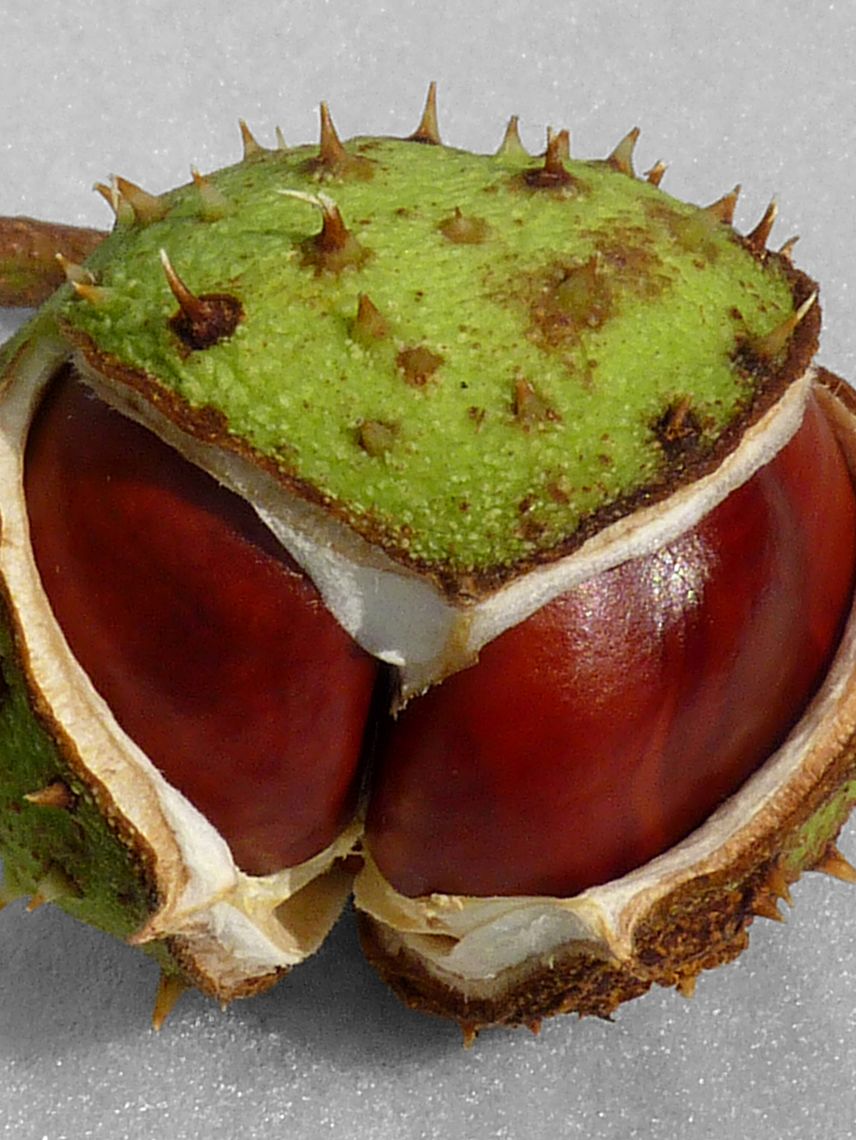Horse Chestnut (Aesculus hippocastanum)
The horse chestnut is most noted for its white flowers that grow upright in 5-inch to 12-inch-long cone-like clusters. The tree's leaves are composed of 7 long, teardrop-shaped, and toothed leaflets, which are arranged circularly. The fruit that this tree produces is encased in a spiky outside layer. This tree attracts birds and small mammals.
Family: Sapindaceae (Soapberry)
Characteristics: The dark green leaves are composed of seven 5-inch to 12-inch-long, teardrop-shaped and toothed leaflets, which are palmately compound (leaves radiate from a single point). In the fall, leaves turn a dull yellow or brown. In May, white flowers with red or yellow markings begin to bloom in 5-inch to 12-inch-long upright terminal panicles (loose branching clusters). This tree produces fruits, which are encased in round, spiky, leathery, and green capsules. Bark is gray, and with age starts to chip away. This tree has an upright oval shape. It grows 50-75 feet high and 40-65 feet wide.
Foliage: Deciduous (leaves lost seasonally)
Geographic Origin: Balkans (non-native)
Cultivation Notes: Requires medium maintenance. Does best in full sun to part shade. Prefers moist and fertile soils. Buckeye trees may be difficult to transplant, due to their deep taproot. Leaves may scorch in late summer.
Number on Campus: 2
* On campus, we also have the Red Horse Chestnut (Aesculus x carnea)
Sources: Dirr, Morton Arboretum, Missouri Botanical Garden

